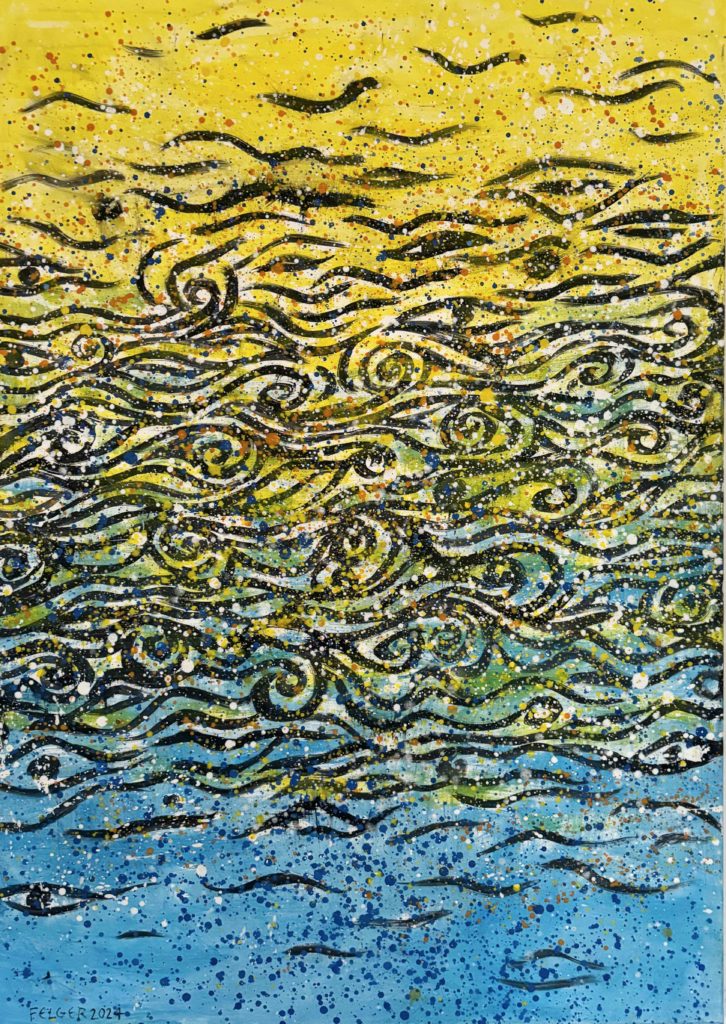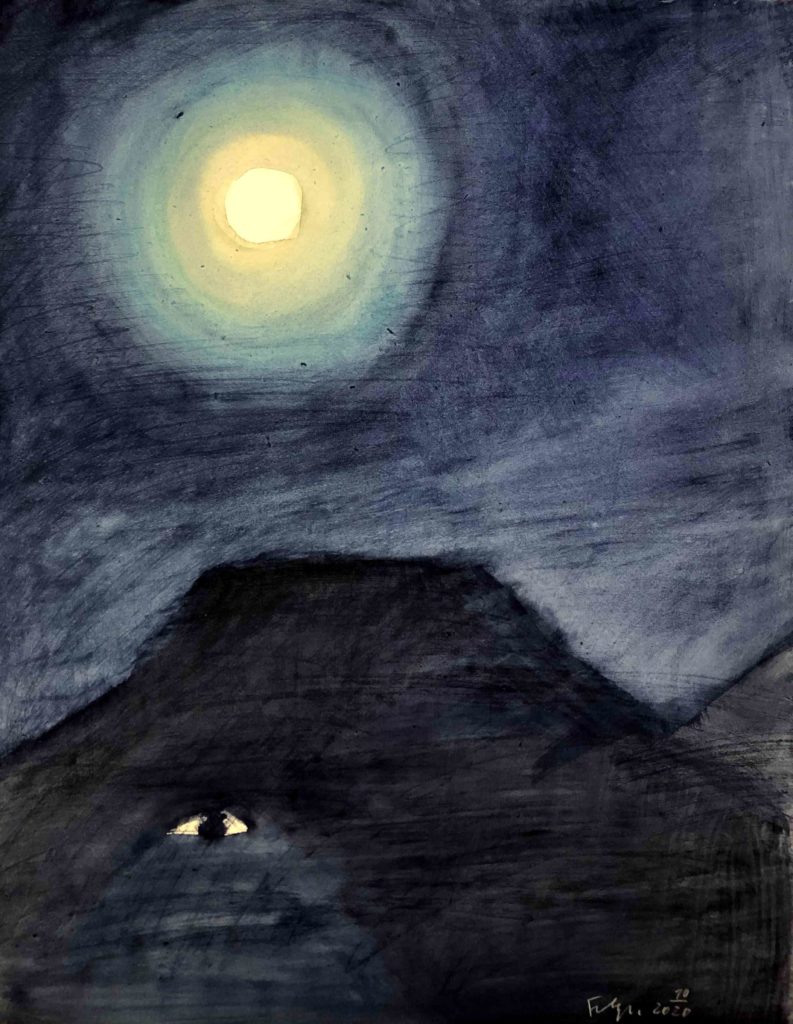untitled
Eye shapes often appear in Andreas Felger’s paintings, both as part of figurative representations and as solitary forms, detached from faces, in landscapes, and in primarily abstract compositions. The meanings of these pictogram-like formal elements vary according to context. Religious connotations are often evident when an ‘eye of God’ appears alone in the upper half of the picture. A mountain can also ‘see’ – as in our second image Farrenberg im Mond (Farrenberg in the Moon) – and we think of a personified nature into which we not only immerse our gaze, but which unexpectedly looks back at us. Through our gaze, trees, forests, and the sky become our counterparts, as if creation were speaking to us directly. One might think that an ancient concept of nature resonates here, the animation of nature as we know it from mythology. In Andreas Felger’s depictions of eyes, however, only this one pictorial symbol remains of the mythological figure: a reclining almond shape with a circular center.
In the oil painting from 2024 presented here, Untitled, the symbolism appears to be relativized. The shapes of the eyes appear and disappear, just as the movements of the water suggest. The blue and sand-colored background and the foreground with its wavy ornamentation could refer to a beach scene in which glances are exchanged. They appear and disappear, merging into the moving lines that converge toward the center of the picture. The structures open evenly at the top and bottom, making the upper and lower halves of the picture appear symmetrical, as on the water, so on land. The style of Andreas Felger’s brush ‘writing’ moves the viewer’s eye in an almost playful way; one senses the painter’s enthusiasm and pleasure in setting the moving signs. The rest is done by the dots and speckles of color loosely distributed across the entire picture surface, which airily and lightly scatter the wave and eye ornaments and, in turn, keep the viewer’s gaze in motion. The painter’s brushwork, the liquidity of the paint, and the wateriness of the depicted elements combine to create an animated yet intangible picture surface.
Text by Marvin Altner
Marvin Altner holds a doctorate in art history and is a lecturer in art studies at the University of Kassel. After a traineeship at the Hamburger Kunsthalle, he worked as a research assistant and curator at museums in Berlin and Hamburg and as a freelance author in the field of visual arts from the 19th century to the present. Since 2012, he has been teaching at the Kunsthochschule Kassel in the art studies program and works as a research assistant for the Andreas Felger Kulturstiftung, including as author, exhibition coordinator, and supervisor of the database of Andreas Felger’s works.


